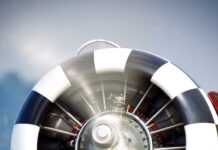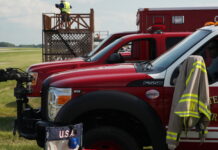Sadly, the history of air shows is awash with stories in which energy-dissipating maneuvers on the downline were determined to be a contributing factor in a fatal accident. But, as common as these types of accidents have been, they are also among the easiest to avoid.
The problem typically occurs when the pilot performs one too many energy-losing maneuvers on the downline, leaving the aircraft without sufficient energy to recover due to positioning on either the front side or back side of the aircraft’s cornering velocity. If this happens, the aircraft may become either aerodynamically limited or g limited which, in turn, denies the pilot minimum turn radius, sometimes with tragic results. The mathematics and physics of this issue differ from aircraft to aircraft and from air show venue to air show venue. Density altitude and weather conditions can also play a critical role. So, an exhaustive explanation with a consideration of all the different variables is not possible here. But what is possible is to move this issue to top of mind awareness for all air show pilots.
Consideration of any maneuvers that unnecessarily lose potentially lifesaving energy should be looked at very carefully. Can you be as entertaining to the audience with two snap rolls instead of three? Would you provide yourself with additional margins by changing your targeted recovery altitude from 250 feet to 500 feet? If your current sequence includes five energy dissipating maneuvers on the downline, can you simply reduce that from five to four and address any potential problems in that way? If you are performing and unexpectedly find yourself behind on energy, can you build in places where you can make up that energy loss without interrupting your sequence?
The common denominator on all of these issues is cornering velocity. Every pilot performing in the low-level aerobatic environment must have an intimate understanding of corner velocity and its ramifications relating to low altitude downline recovery. It is possible to be both too fast and too slow for ideal corning speed, but the most common problems come when aircraft are going too slow. If you dissipate energy on downline maneuvers to the point where you no longer have access to best possible cornering speed without building up some of the speed that you just deliberately lost, then you may be eliminating margins, reducing your options and putting yourself at unnecessary risk.
Perhaps more to the point, if you find that you are at a place during a performance where you are trying to find additional speed to achieve optimal cornering speed, then you have already lost the best opportunity. You should find those spots in the comfort of your hangar or living room and build opportunities to retain speed into your sequence so that you will never find yourself wishing you had that additional speed, but with no good way to get it.








